wHY designs Frieze Los Angeles tent at Paramount Studios location

The inaugural Frieze Los Angeles kicks off with a new indoor and outdoor tent design by local architecture studio wHY. Pitching up at Paramount Studios, Frieze’s new location in Hollywood celebrates the city’s creative eco-system, while the tent design brings in the Californian light and makes the most of the good weather with outdoor spaces and green walls.
‘We basically surgically insert the tent into a working busy film studio,’ says Kulapat Yantrasast, founder and creative director at wHY, and a Los Angeles resident since 2003. He wanted to create the effect of being backstage, and reflect the ‘less rigid’ art scene of LA, in comparison to other contemporary art hub cities.
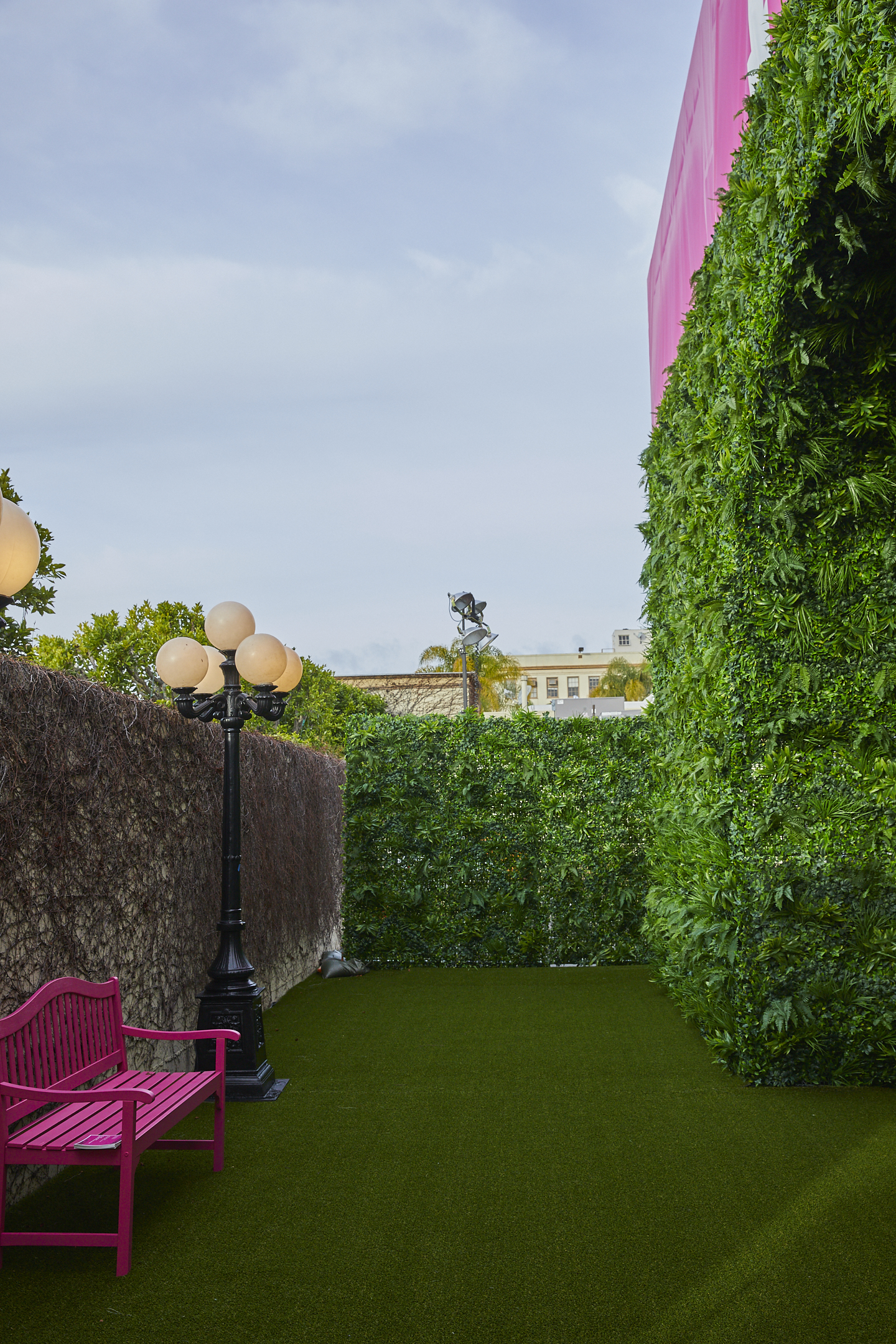
Green outdoor space at Frieze LA
A pink banner afloat two archways wrapped in faux-foliage welcomes you to the fair. The structure is a reference to the Paramount Studios’ famous double arch entrance on Melrose Avenue. Yantrasast used plants throughout, real and artificial, to anchor the fair into its new climate. Inside the entry pavilion, blue-stained plywood is constructed using set-building techniques of the studio’s master production designers.
RELATED STORY
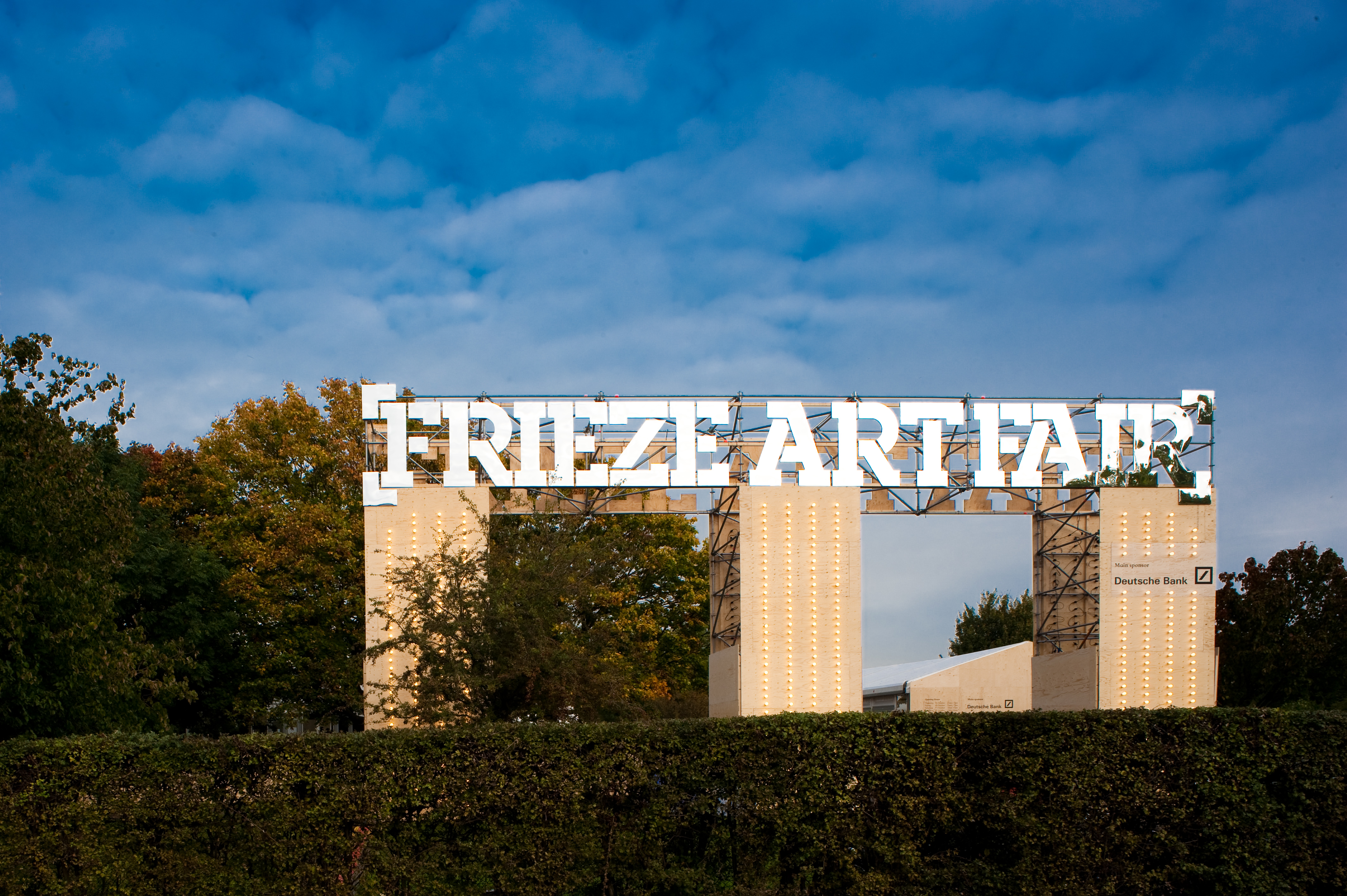
Frieze London, 2009
Architecture and branding have developed a close relationship across the Frieze art fair design since it launched in 2004. Here, at the 2009 rendition in London, the trademark Frieze stamp appears like a billboard atop three chunky architectural columns marking the entrance. While the branding has become more muted as the fair has matured, this bastion is reminiscent of the early Frieze days. As a streak of continuation, sections of the fair continue to be highlighted by a series of neon shades.
Being at an art fair is often like being in a fluorescently-lit black hole, where you lose all sense of time. Yet wHY’s opaque and translucent plastic ceiling panels bring in more daylight than ever before for an enjoyable viewing experience – and the gallerists’ wellbeing – for the week.
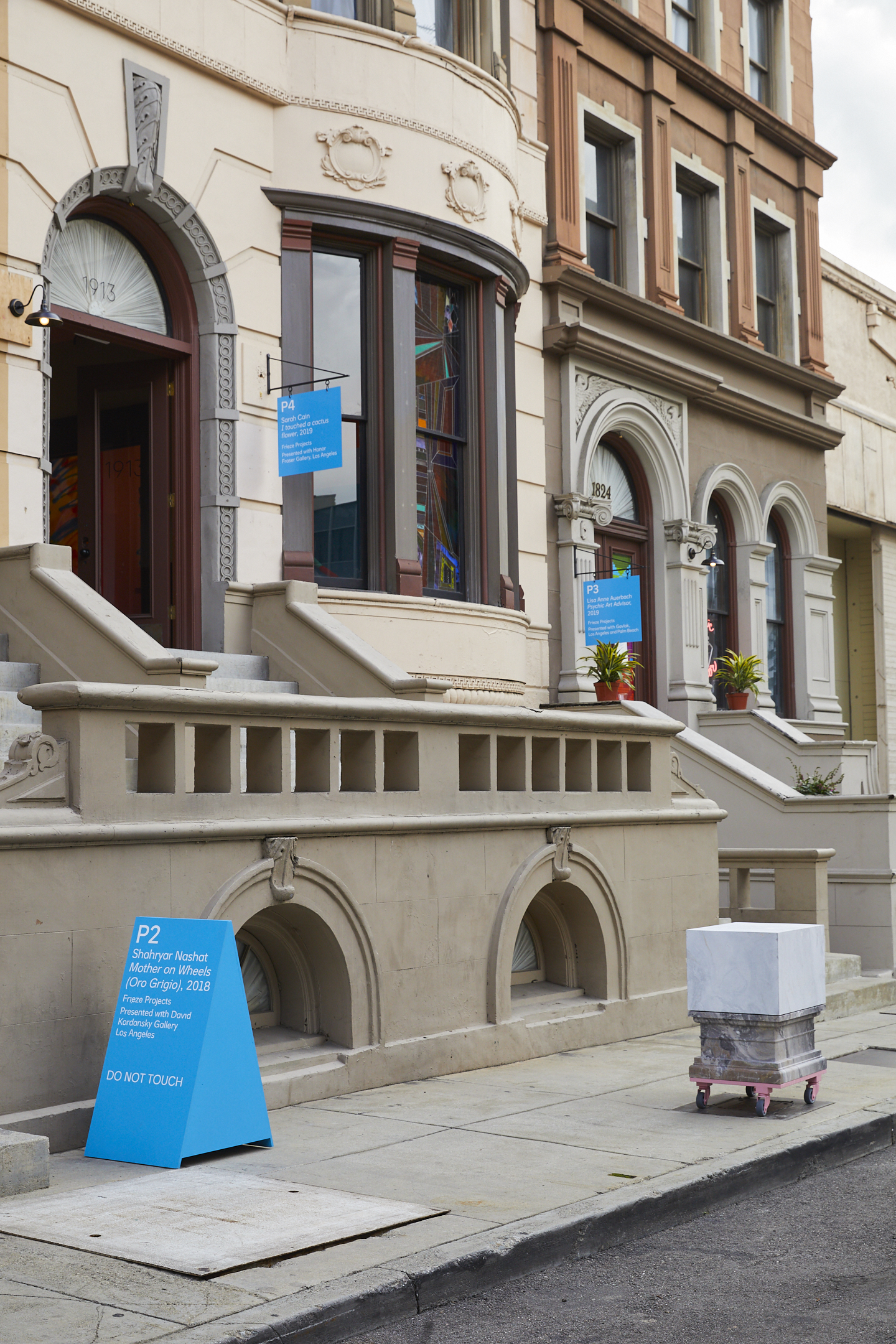
Art displayed outside at the Paramount Studios set.
Indoor areas are balanced by outdoor spaces that feature open-air artworks by Sarah Cain, Paul McCarthy and Barbara Kruger amongst others. Los Angeles is after all blessed with more reliable forecasts than London or New York, where Frieze spends the rest of its year.
Before reaching your destination booth, you might also be tempted by cult eateries SQIRL and Roberta’s, both woven into the experience along the way. Building a pathway to guide visitors from pulling up at the curb to writing a cheque, was the main aim of Yantrasast – as Frieze Art Fair has continued to prove since its founding in 2003, the art fair can be a lively social and educational experience too.
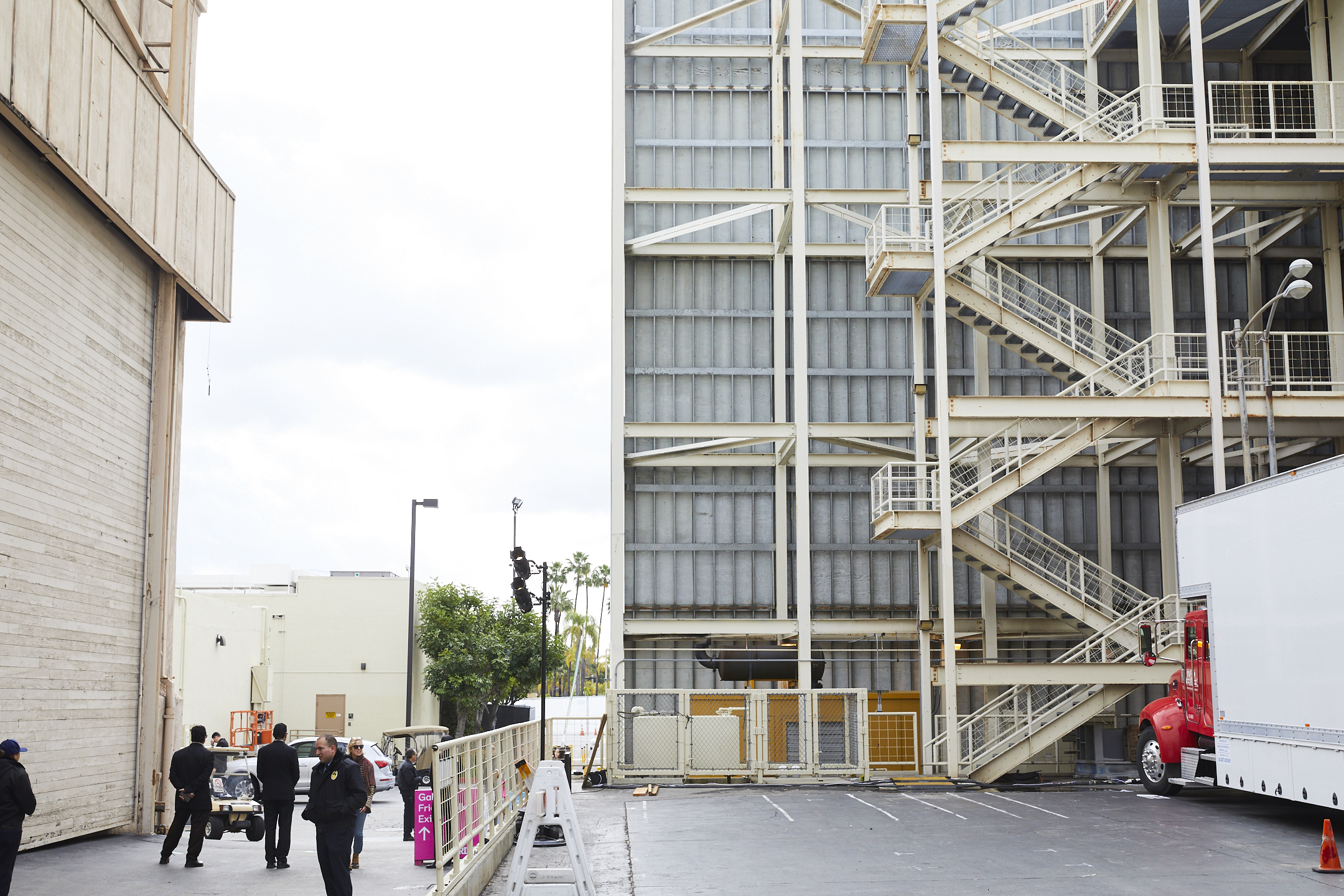
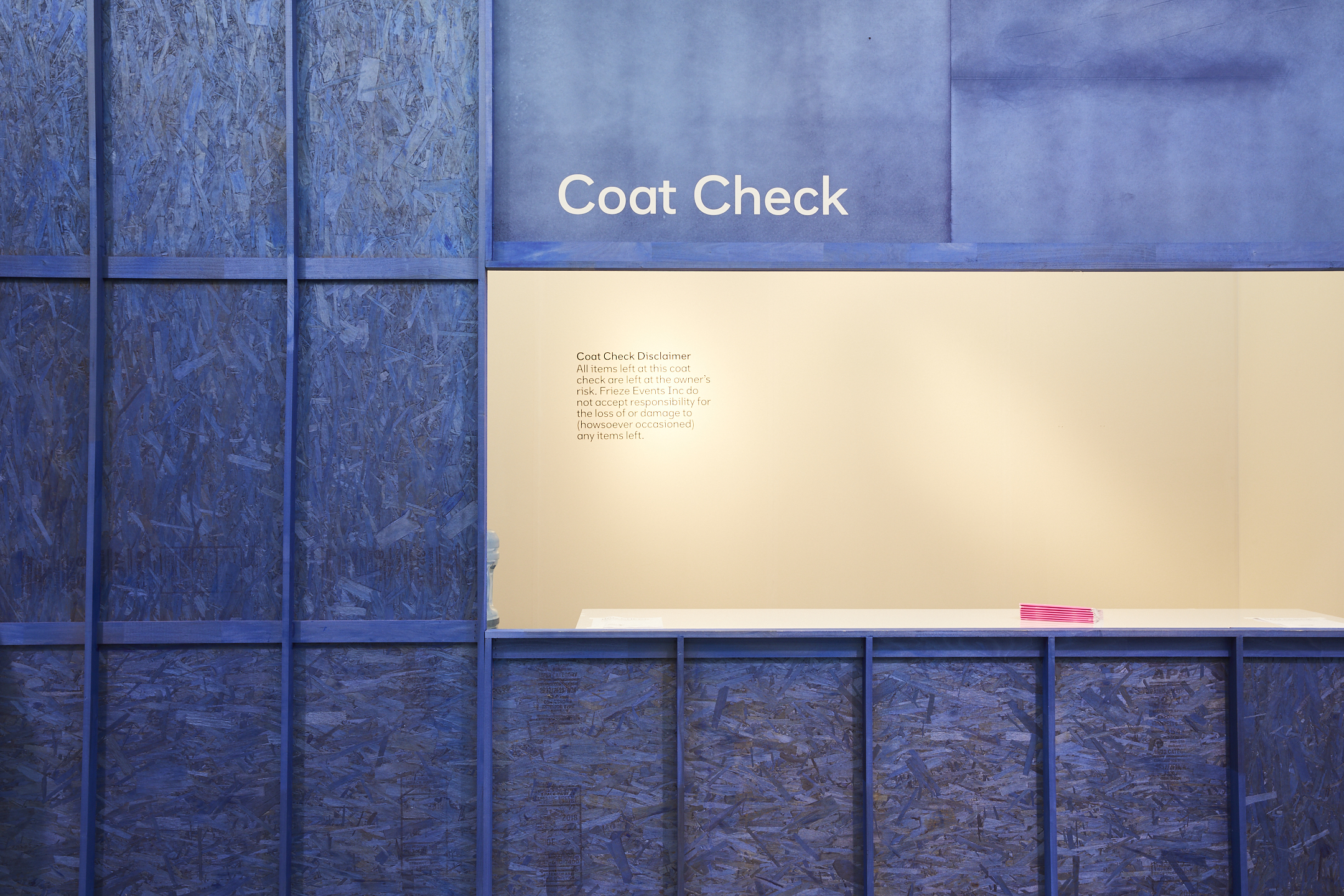
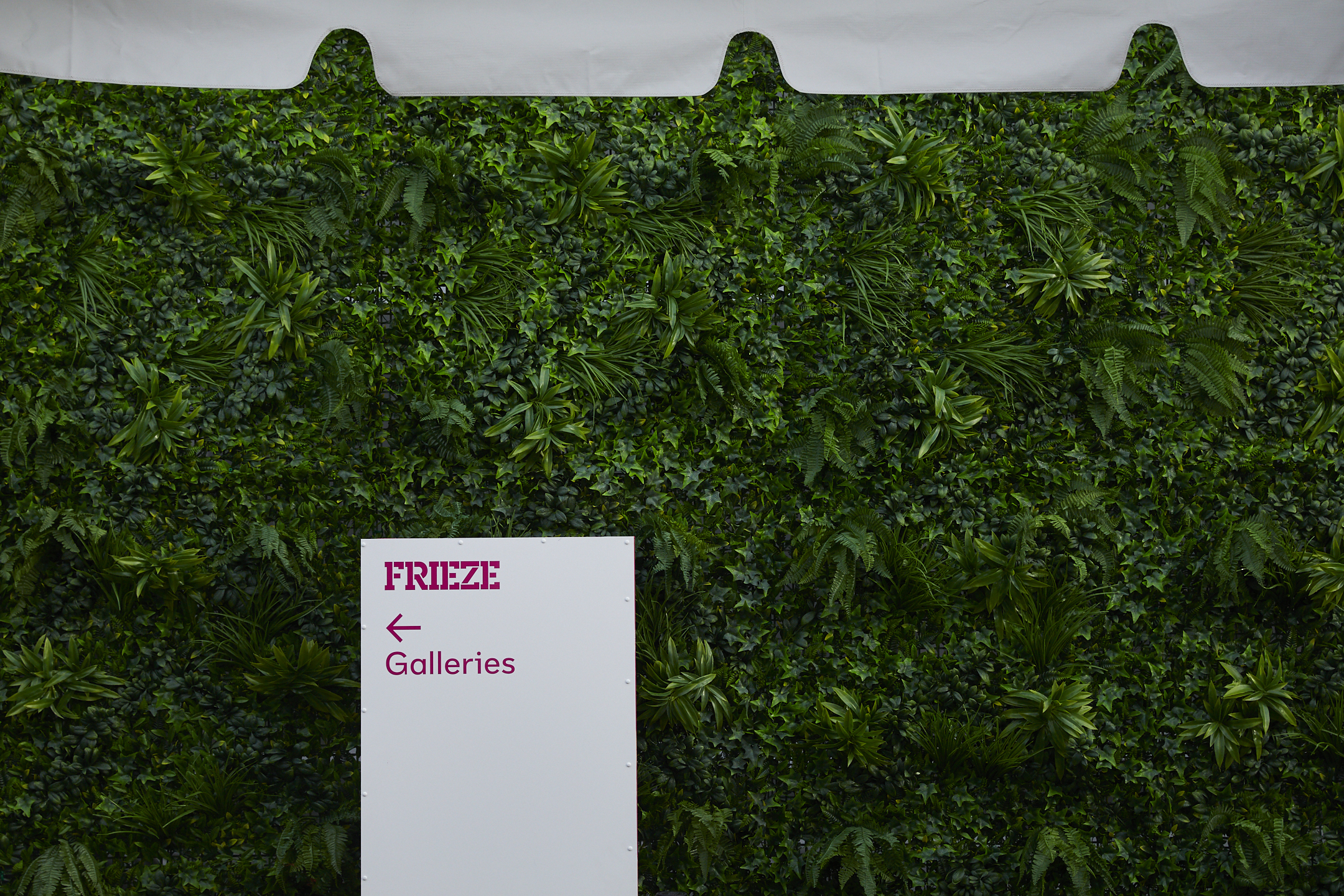

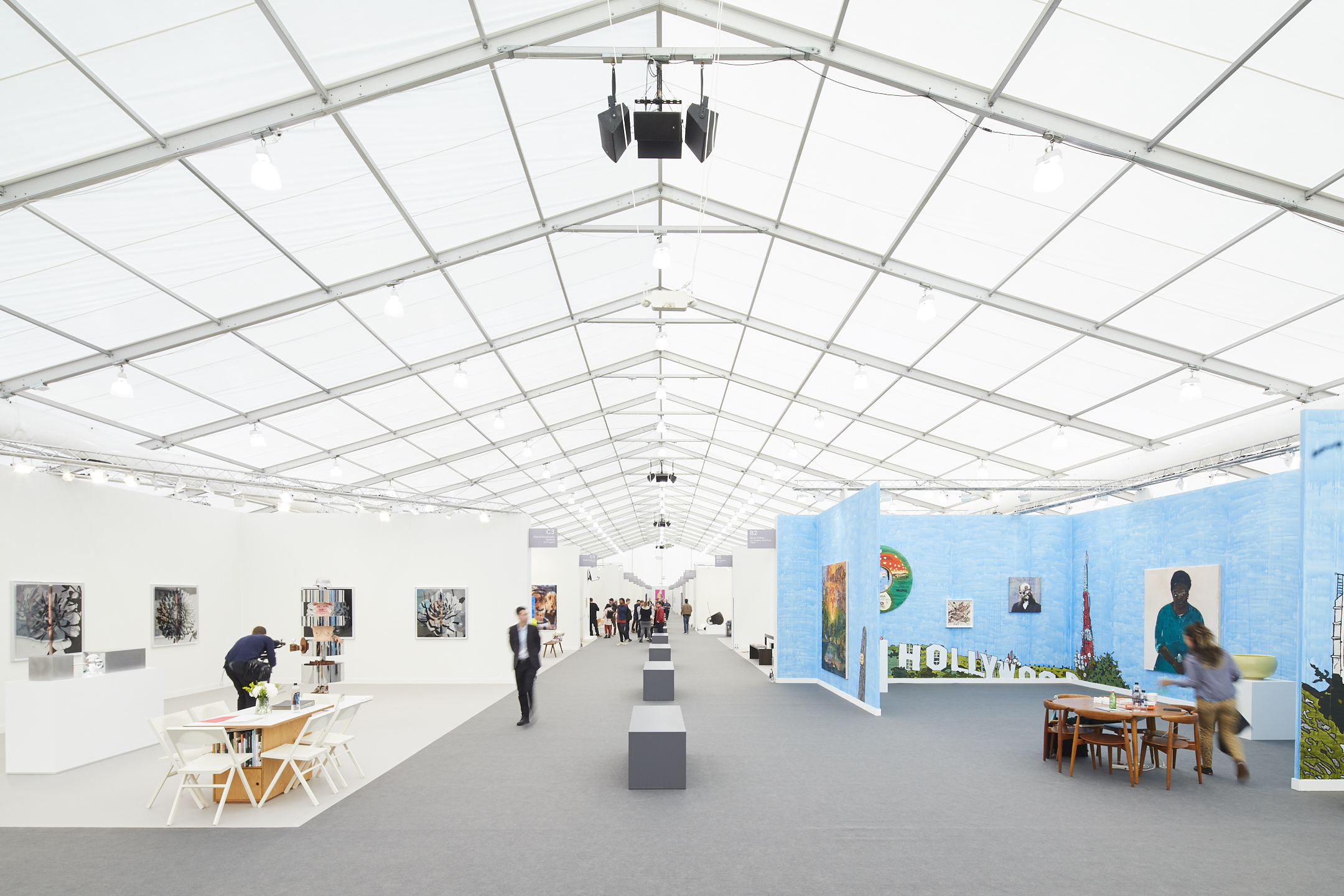
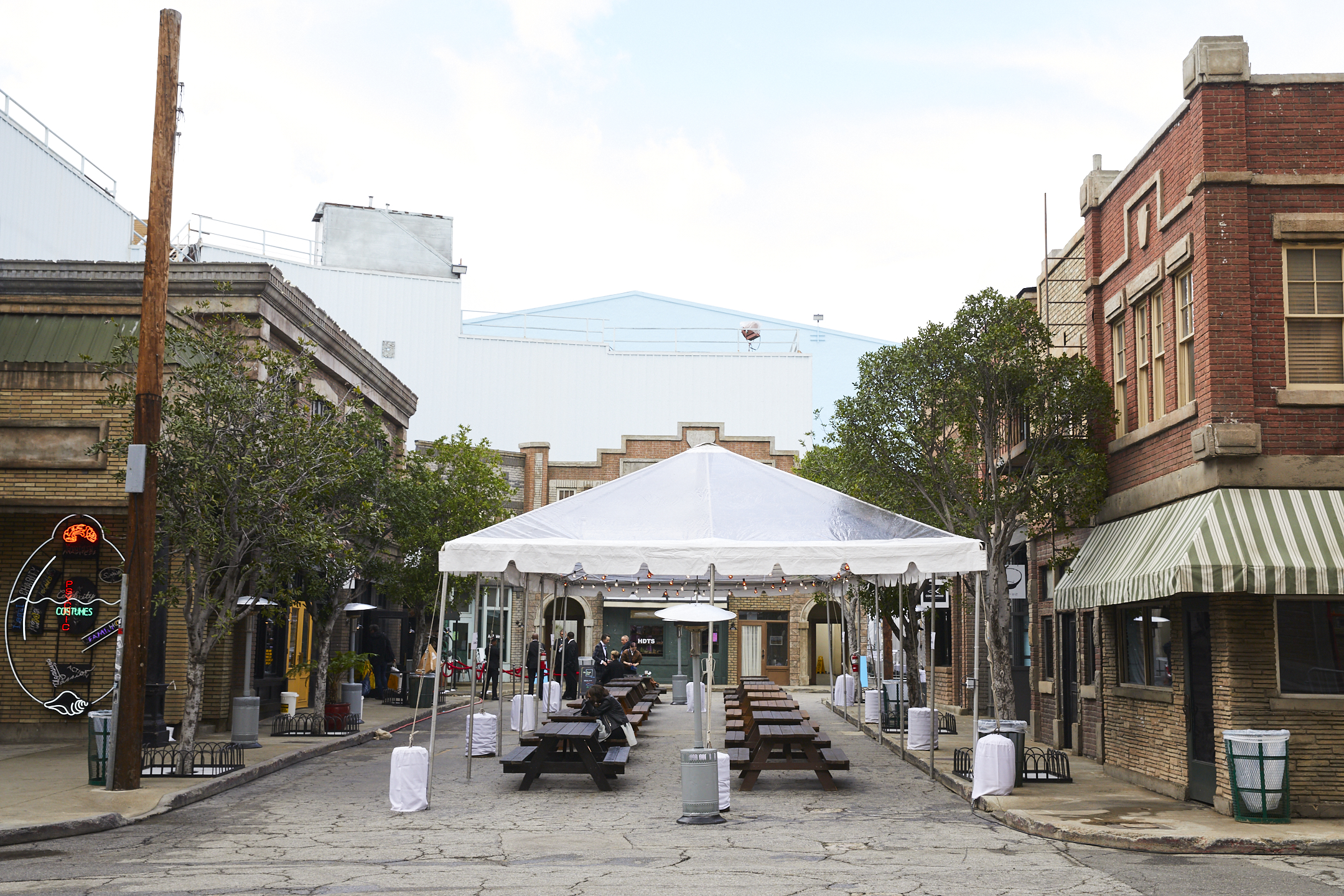

INFORMATION
For more information, visit the wHY Architecture website
Receive our daily digest of inspiration, escapism and design stories from around the world direct to your inbox.
Harriet Thorpe is a writer, journalist and editor covering architecture, design and culture, with particular interest in sustainability, 20th-century architecture and community. After studying History of Art at the School of Oriental and African Studies (SOAS) and Journalism at City University in London, she developed her interest in architecture working at Wallpaper* magazine and today contributes to Wallpaper*, The World of Interiors and Icon magazine, amongst other titles. She is author of The Sustainable City (2022, Hoxton Mini Press), a book about sustainable architecture in London, and the Modern Cambridge Map (2023, Blue Crow Media), a map of 20th-century architecture in Cambridge, the city where she grew up.
-
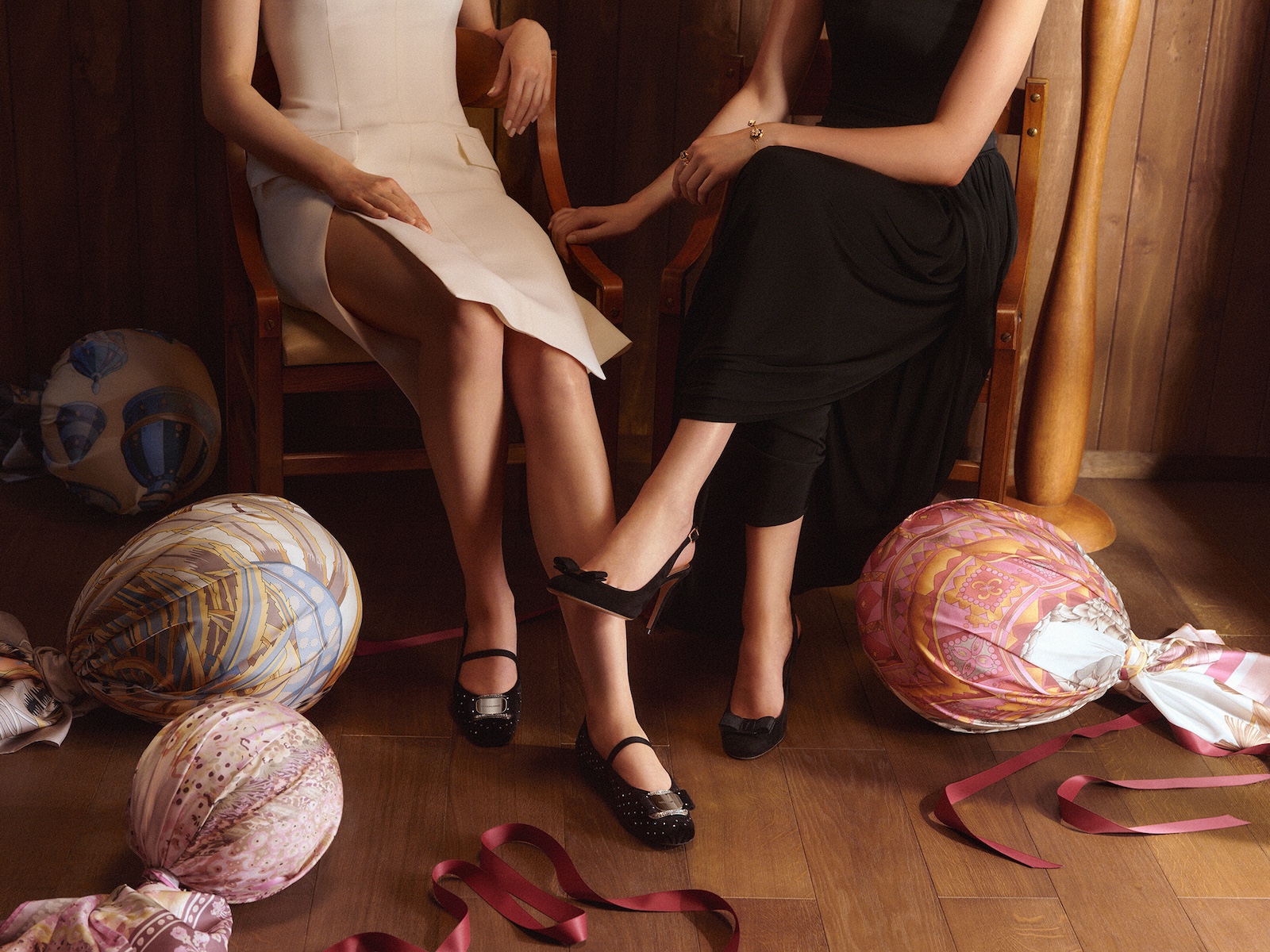 Ferragamo gifts come imbued with glamour and nostalgia this season
Ferragamo gifts come imbued with glamour and nostalgia this seasonIn a series of short films and images, the Italian fashion house celebrates gift-giving and offers an array of wishlist-worthy examples, from bags to shoes and scarves
-
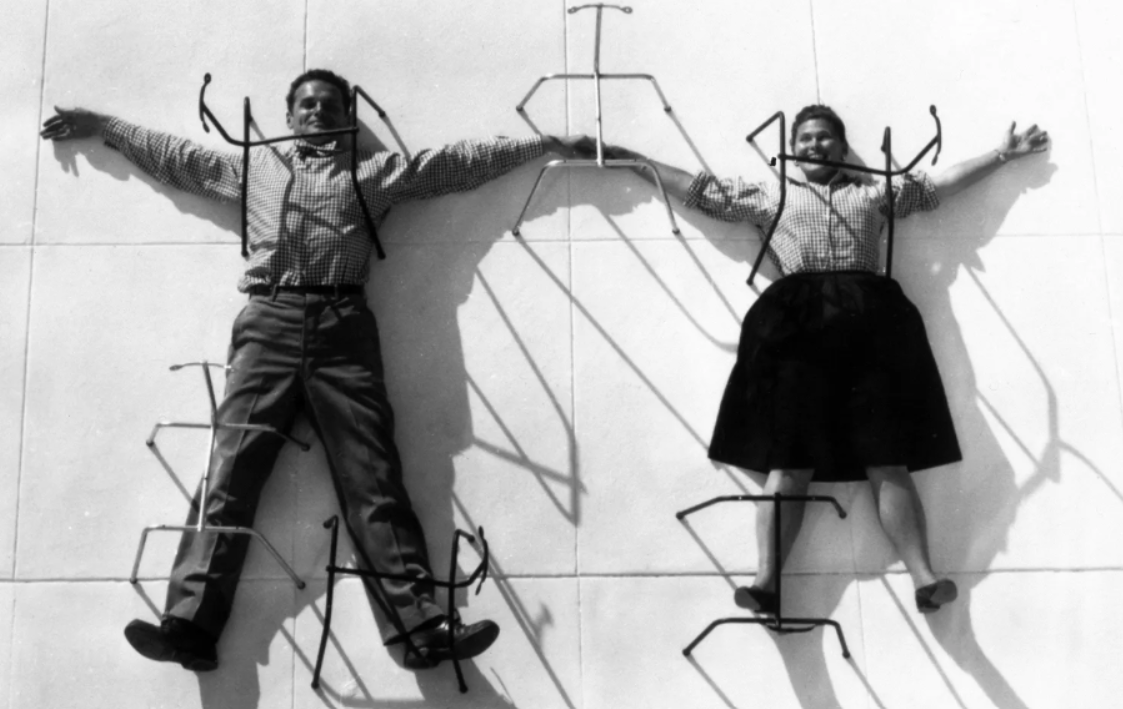 How Charles and Ray Eames combined problem solving with humour and playfulness to create some of the most enduring furniture designs of modern times
How Charles and Ray Eames combined problem solving with humour and playfulness to create some of the most enduring furniture designs of modern timesEverything you need to know about Charles and Ray Eames, the American design giants who revolutionised the concept of design for everyday life with humour and integrity
-
 Why are the most memorable watch designers increasingly from outside the industry?
Why are the most memorable watch designers increasingly from outside the industry?Many of the most striking and influential watches of the 21st century have been designed by those outside of the industry’s mainstream. Is it only through the hiring of external designers that watch aesthetics really move on?
-
 Out of office: The Wallpaper* editors’ picks of the week
Out of office: The Wallpaper* editors’ picks of the weekFrom sumo wrestling to Singaporean fare, medieval manuscripts to magnetic exhibitions, the Wallpaper* team have traversed the length and breadth of culture in the capital this week
-
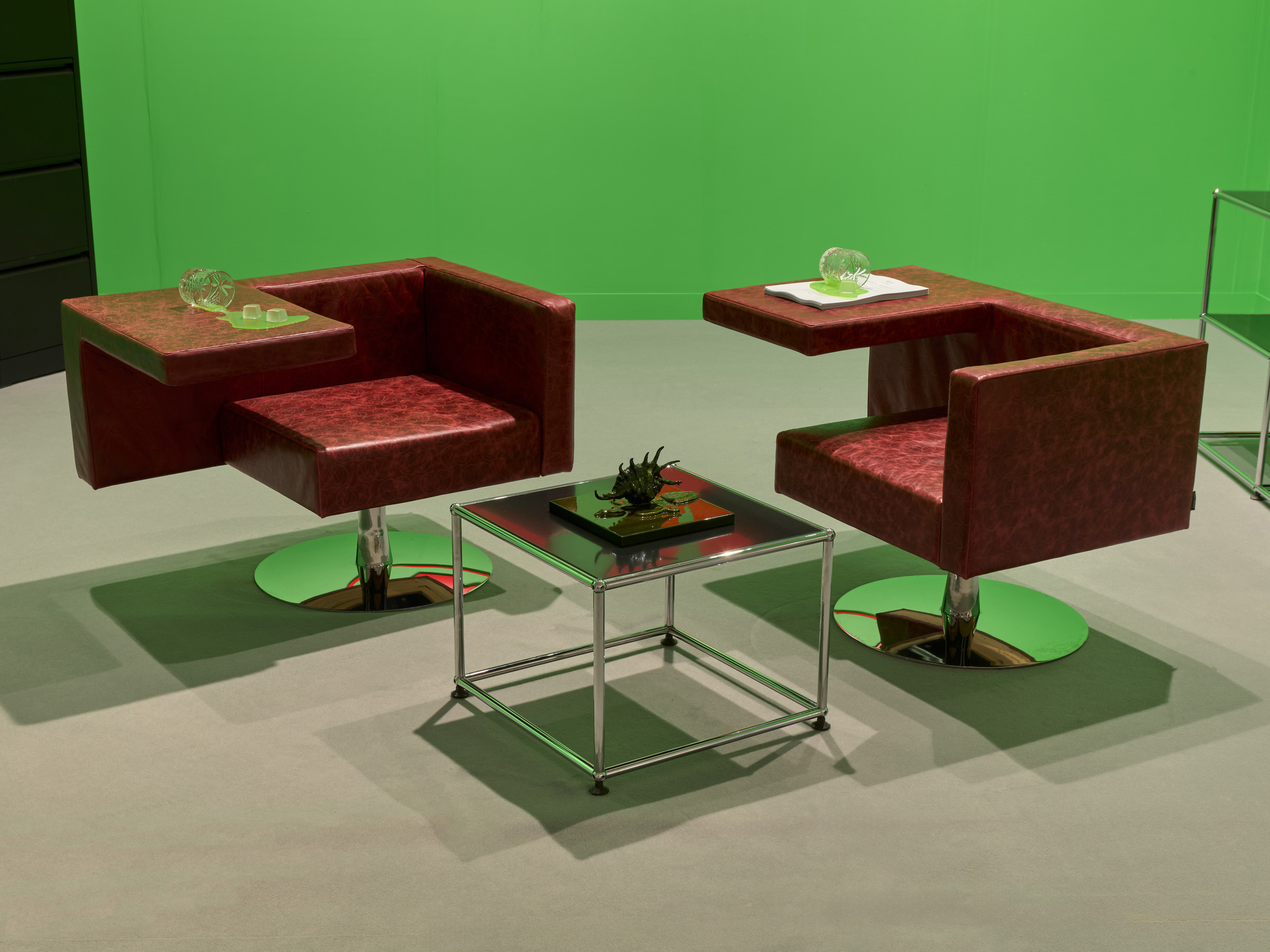 Who are the nine standout artists that shaped Frieze London 2025?
Who are the nine standout artists that shaped Frieze London 2025?Amid the hectic Frieze London schedule, many artists were showcasing extraordinary work this year. Here are our favourites
-
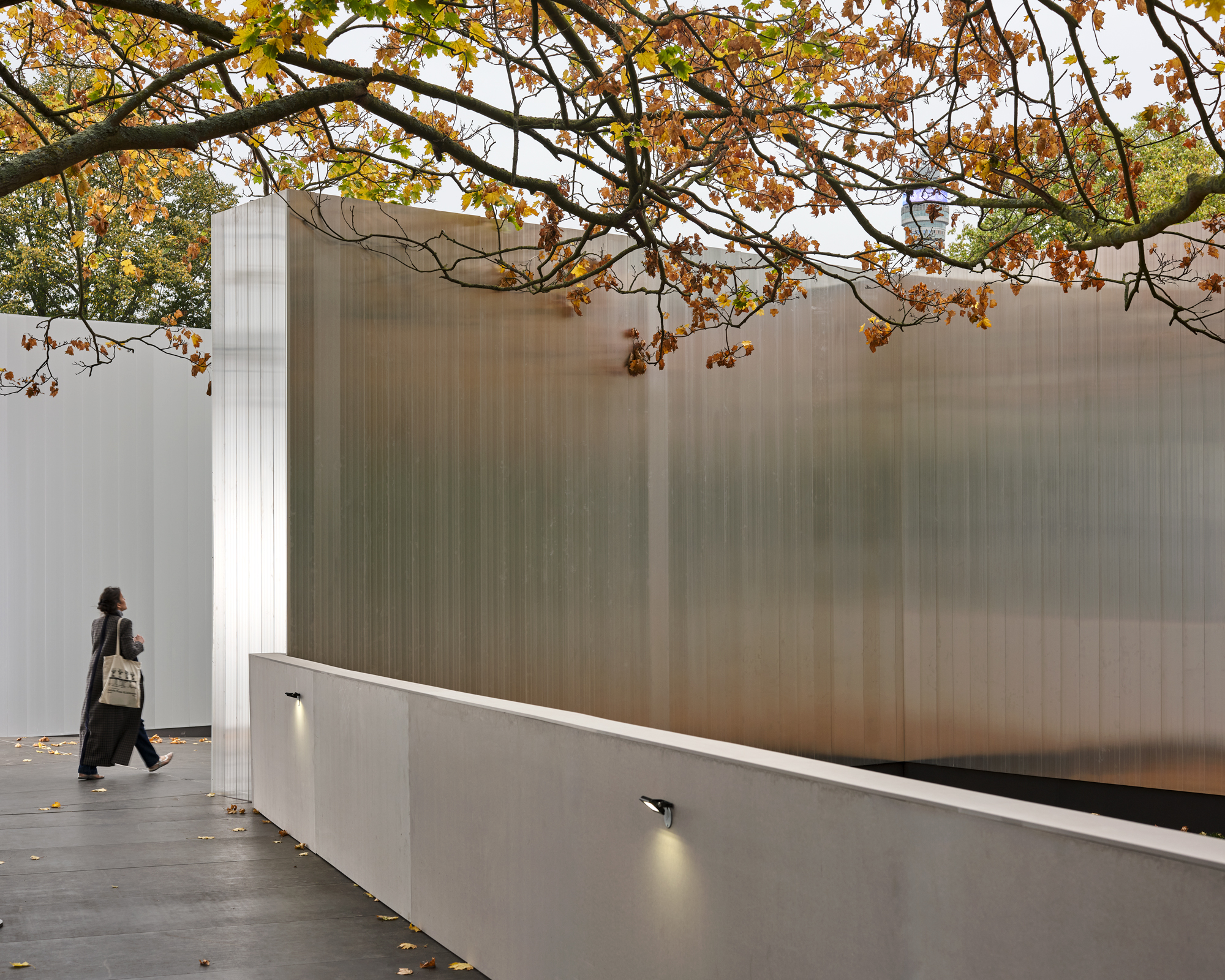 Out of office: The Wallpaper* editors' picks of the week
Out of office: The Wallpaper* editors' picks of the weekThe London office of Wallpaper* had a very important visitor this week. Elsewhere, the team traverse a week at Frieze
-
 Leo Costelloe turns the kitchen into a site of fantasy and unease
Leo Costelloe turns the kitchen into a site of fantasy and uneaseFor Frieze week, Costelloe transforms everyday domesticity into something intimate, surreal and faintly haunted at The Shop at Sadie Coles
-
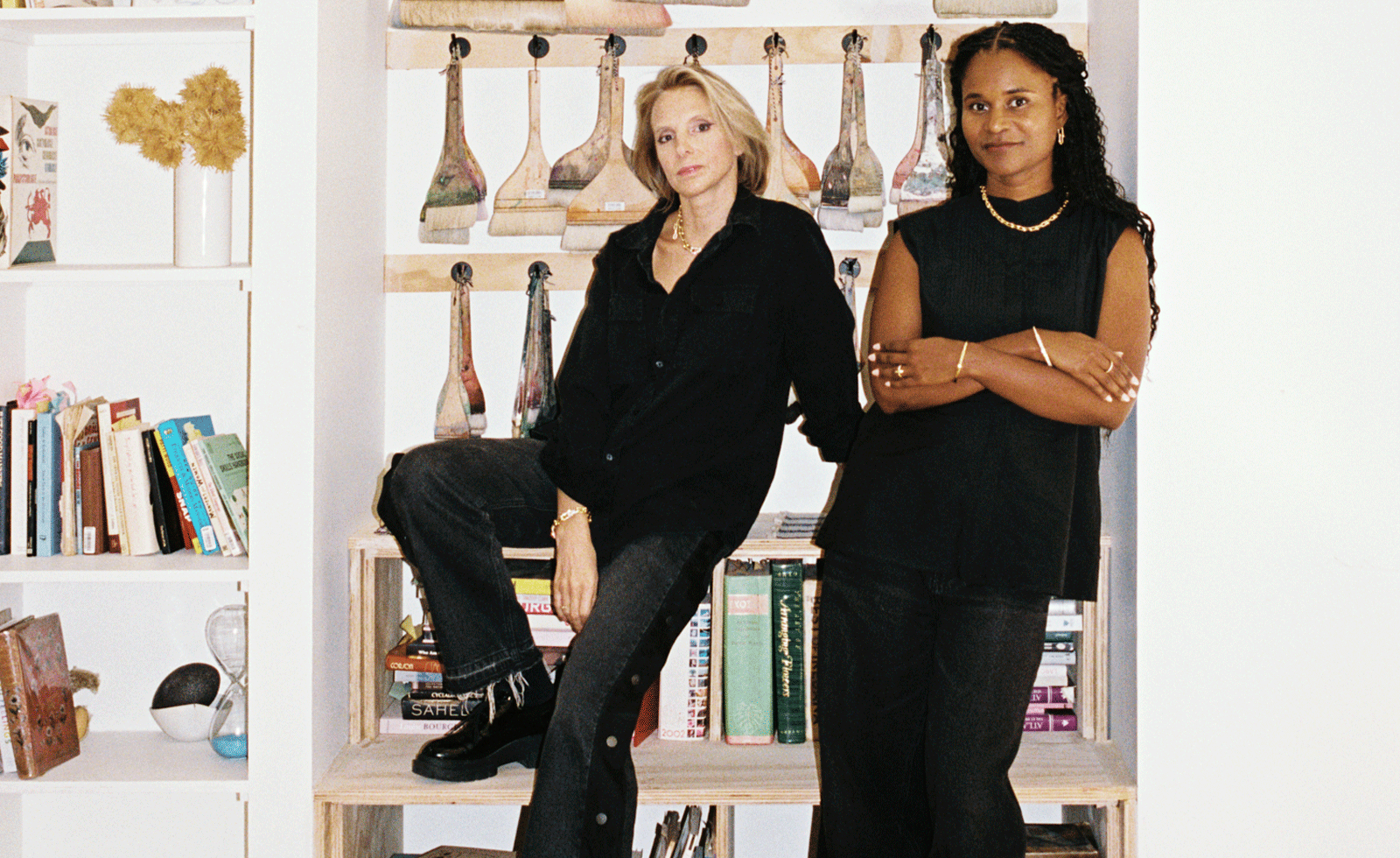 Tiffany & Co’s artist mentorship at Frieze London puts creative exchange centre stage
Tiffany & Co’s artist mentorship at Frieze London puts creative exchange centre stageAt Frieze London 2025, Tiffany & Co partners with the fair’s Artist-to-Artist initiative, expanding its reach and reaffirming the value of mentorship within the global art community
-
 Out of office: the Wallpaper* editors’ picks of the week
Out of office: the Wallpaper* editors’ picks of the weekAs we approach Frieze, our editors have been trawling the capital's galleries. Elsewhere: a 'Wineglass' marathon, a must-see film, and a visit to a science museum
-
 Frieze Sculpture is back – here's what to see in Regent's Park
Frieze Sculpture is back – here's what to see in Regent's ParkFrieze Sculpture has returned to Regent's Park. As London gears up for Art Week, here's what to see on the fringes
-
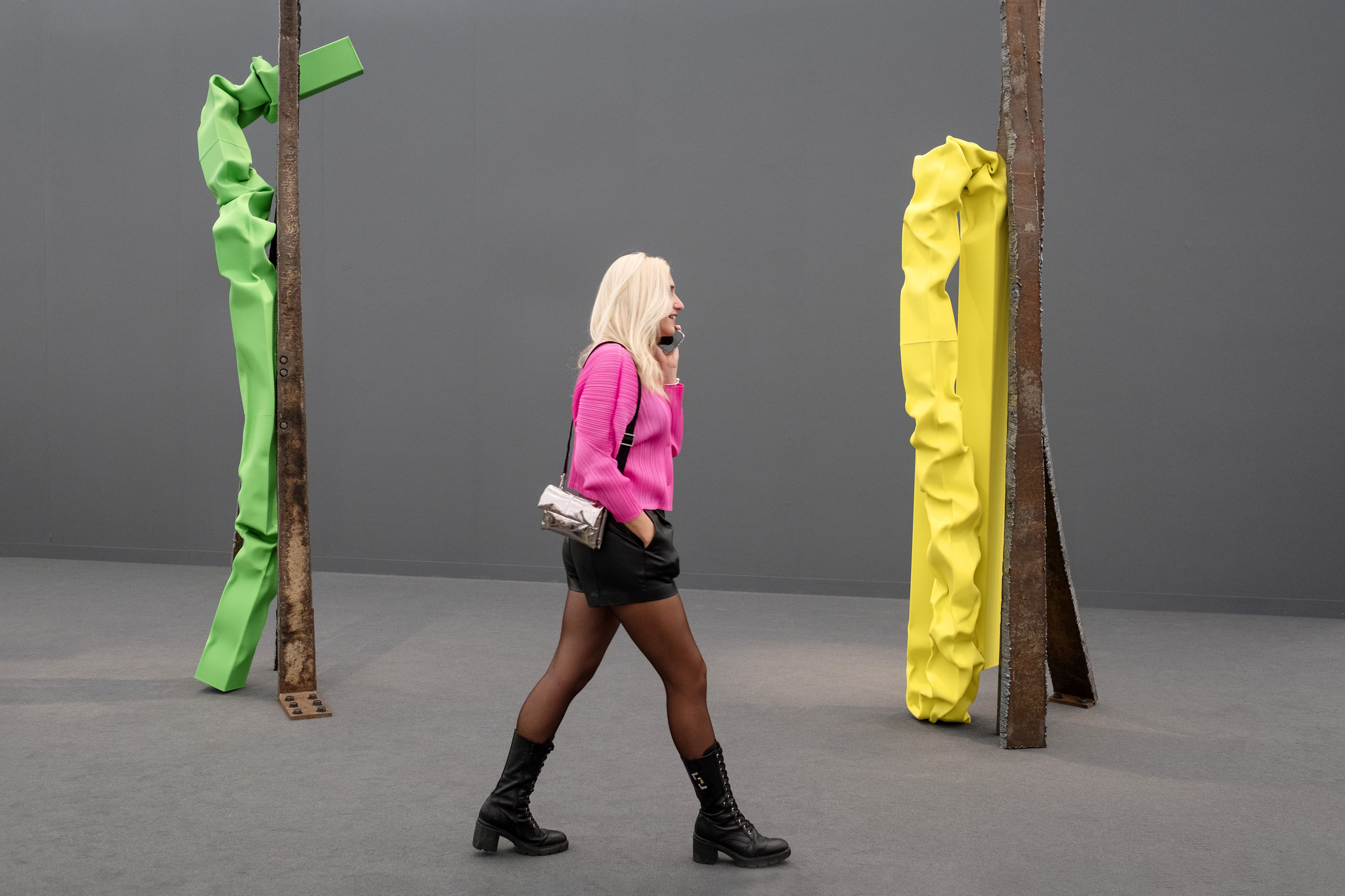 Frieze London is back! Here’s what to see
Frieze London is back! Here’s what to seeAs London gears up for Frieze 2025 (15-19 October), plan your visit early